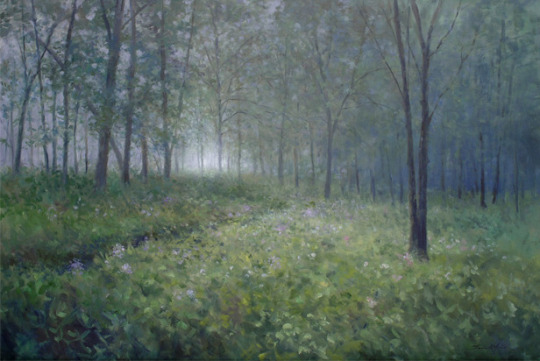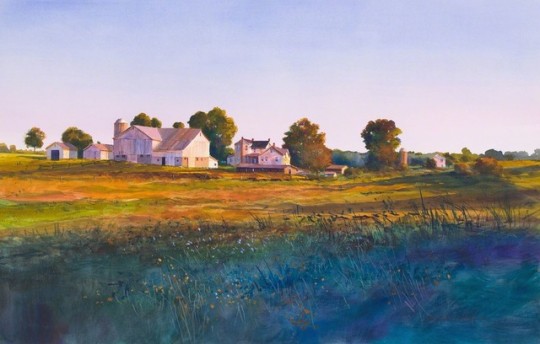#Thomas McNickle
Photo

Willow Pond , Spring Light - Thomas McNickle , 2020.
American, b. 1944 -
Oil on canvas , 30 x 40 in.
293 notes
·
View notes
Photo


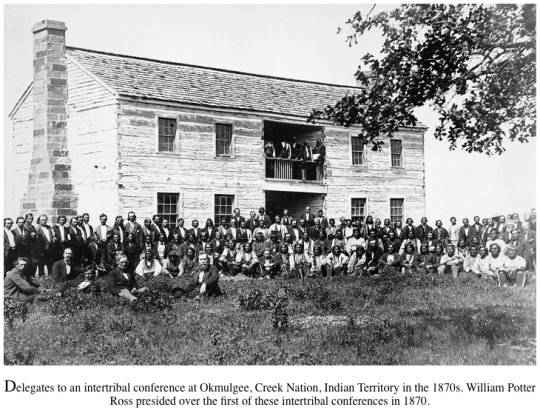


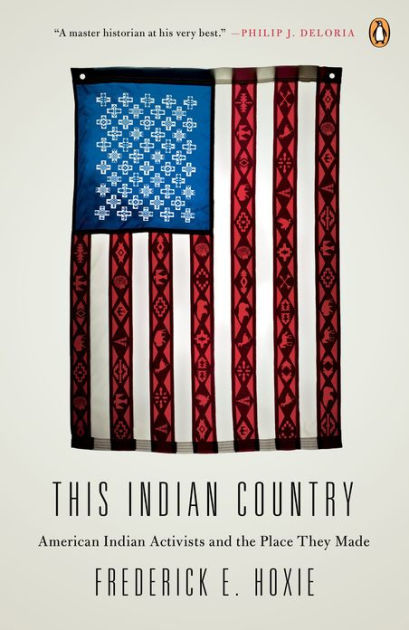

This Indian Country: American Indian Activists and the Place They Made
by Frederick Hoxie (2012)
Frederick E. Hoxie, one of our most prominent and celebrated academic historians of Native American history, has for years asked his undergraduate students at the beginning of each semester to write down the names of three American Indians. Almost without exception, year after year, the names are Geronimo, Sitting Bull and Crazy Horse. The general conclusion is inescapable: Most Americans instinctively view Indians as people of the past who occupy a position outside the central narrative of American history. These three individuals were warriors, men who fought violently against American expansion, lost, and died. It's taken as given that Native history has no particular relationship to what is conventionally presented as the story of America. Indians had a history too; but theirs was short and sad, and it ended a long time ago.In This Indian Country, Hoxie has created a bold and sweeping counter-narrative to our conventional understanding. Native American history, he argues, is also a story of political activism, its victories hard-won in courts and campaigns rather than on the battlefield. For more than two hundred years, Indian activists—some famous, many unknown beyond their own communities—have sought to bridge the distance between indigenous cultures and the republican democracy of the United States through legal and political debate. Over time their struggle defined a new language of "Indian rights" and created a vision of American Indian identity. In the process, they entered a dialogue with other activist movements, from African American civil rights to women's rights and other progressive organizations.Hoxie weaves a powerful narrative that connects the individual to the tribe, the tribe to the nation, and the nation to broader historical processes. He asks readers to think deeply about how a country based on the values of liberty and equality managed to adapt to the complex cultural and political demands of people who refused to be overrun or ignored. As we grapple with contemporary challenges to national institutions, from inside and outside our borders, and as we reflect on the array of shifting national and cultural identities across the globe, This Indian Country provides a context and a language for understanding our present dilemmas.
Image 1
15: My informal quiz is intended to prod students to look beneath the surface of the popular beliefs that define Native people as exotic and irrelevant. I also ask students to consider why it is that Americans so easily accept the romantic stereotype of Indians as heroic warriors and princesses? Why don’t we demand a richer, three-dimensional story? I pose a Native American version of the question the African American writer James Baldwin often asked white audiences a generation ago: “Why do you need a nigger?” My question is the same: Why do Americans need “Indians”—brave, exotic, and dead—as major figures in national culture?
17: This book counters that preference by presenting portraits of American Indians who neither physically resisted, nor surrendered to, the expanding continental empire that became the United States. The men and women portrayed here were born within the boundaries of the United States, rose to positions of community leadership, and decided to enter the nation’s political arena—as lawyers, lobbyists, agitators, and writers—to defend their communities. They argued that Native people occupied a distinct place inside the borders of the United States and deserved special recognition from the central government. Undaunted by their adversary’s military power, these activists employed legal reasoning, political pressure, and philosophical arguments to wage a continuous campaign on behalf of Indian autonomy, freedom, and survival. Some were homegrown activists whose focus was on protecting their local homelands; others had wider ambitions for the reform of national policies. All sought to overcome the predicament of political powerlessness and find peaceful resolutions for their complaints. They struggled to create a long-term relationship with the United States that would enable Native people to live as members of both particular indigenous communities and a large, democratic nation.
The story of these activists crosses several centuries. It opens in the waning days of the American Revolution, as negotiators in Paris set geographical boundaries for the new nation that ignored Indian nations that had fought in the conflict and had been recognized previously in international diplomacy. Native activists take center stage in the 1820s, when nationalistic U.S. leaders abandoned an earlier diplomatic tradition and pressed Indian leaders to surrender their homes to American settlers. The Choctaw James McDonald, the first Indian in the United States to be trained as a lawyer, is the protagonist of chapter two. McDonald became his tribe’s legal adviser and drew on American political ideals to defend Indian rights, thereby laying the foundation for future claims against the United States.A generation after McDonald, the Cherokee leader William Potter Ross developed and widened the young Choctaw’s arguments. During the middle decades of the nineteenth century he traveled among Indian tribes in the West as well as to Washington, D.C., to recruit other Native leaders to defend tribal sovereignty. Among those who followed in Ross’s wake were Sarah Winnemucca, a Nevada Paiute who in the 1880s became a nationally famous writer, lecturer, and lobbyist, and a group of remarkable Minnesota Ojibwe tribal leaders who battled both at home and in Washington, D.C., to preserve their tiny community on the shores of Mille Lacs Lake.In the twentieth century the leading activists were often polished professionals like Thomas Sloan, an Omaha Indian who became an attorney and established a legal practice in Washington, D.C. The first Indian to argue a case before the U.S. Supreme Court, Sloan helped found the Society of American Indians in 1911 (serving as its first president) and encouraged other community leaders to create similar networks of support. In the 1930s, when Franklin Roosevelt’s New Deal offered those leaders opportunities to speak out in defense of their tribes, these networks brought forth tribal advocates such as the Seneca Alice Jemison and the Crow leader Robert Yellowtail, as well as a new generation of intellectuals and thinkers, among them the Salish writer and reformer D’Arcy McNickle and the visionary scholar Vine Deloria, Jr., who by the time of his death in 2005 had become the leading proponent of indigenous cultures and tribal rights in the United States.
..
Vocal opposition to Indian landholding in Mississippi began in 1803, after Napoleon had suddenly decided to sell the entire territory to the Americans. The French emperor’s decision immediately transformed the Choctaw homeland from a distant border area to an inland province that boasted hundreds of miles of frontage on a river that was destined to become the nation’s central highway.15 Secure borders and the lure of plantation agriculture triggered a surge of settlement. The American population in the region doubled between 1810 and 1820 and then doubled again by 1830. New towns clustered along the east bank of the Mississippi as well as on the lower reaches of the Tombigbee River, two hundred miles to the east.The American immigrants were soon calling for the creation of two territorial governments in the area. Congress had first organized Mississippi Territory in 1798 as a hundred-mile-wide swath of unsurveyed land hugging the east bank of the great river and then in 1803, had expanded its borders so that it stretched south from Tennessee to the Gulf. Finally, in 1817, the region took its modern shape when the Tombigbee settlements became the Alabama Territory, Mississippi’s eastern neighbor.Events on America’s northwestern frontier echoed those along the Gulf. Secure borders, a surging settler population, and aggressive local leaders encouraged the rapid organization of Ohio, Indiana, and Illinois into territories and states during Jefferson’s presidency. (Ohio became a state in 1803; Indiana in 1816; Illinois in 1818.) Jefferson championed both traditional Indian diplomacy and westward expansion. He understood the value of traditional diplomacy, but he also understood the rising power of western politicians and was far more likely to accommodate them.In 1808 Jefferson supported a major purchase of Choctaw land. He noted that while it was “desirable that the United States should obtain from the native population the entire left (east) bank of the Mississippi,” federal authorities were also determined “to obliterate from the Indian mind an impression . . . that we are constantly forming designs on their lands.” The Choctaws’ current debt of more than forty-six thousand dollars, he explained, provided a solution to this dilemma. Owing to “the pressure of their own convenience,” Jefferson reported, the Choctaws themselves had initiated this sale of five million acres of their land. He wrote that he welcomed this “consolidation of the Mississippi Territory,” and the Senate quickly ratified the agreement.16
...
95: Leaders of the removed tribes were quick to promote the idea of multitribal “international councils” aimed at promoting peaceful relations among the tribes in Indian Territory and the surrounding region. These councils grew out of a tradition of peace conferences that U.S. officials had organized prior to removal to reduce tensions between western tribes (particularly the Osages, Pawnees, Kiowas, and Comanches) and the eastern Indians who had begun to migrate voluntarily to the West early in the century. Fort Gibson, erected in 1822 along the Arkansas River at a spot near the future site of the Cherokee capital of Tahlequah, had been the scene for several of these gatherings. One such meeting in 1834 involved more than a dozen tribes (including recently arrived Delawares and Senecas from the Midwest) that pledged friendship to one another and agreed to meet again to conclude a formal treaty. The 1835 Camp Holmes treaty, negotiated on the prairies west of Fort Gibson, fulfilled that goal. It established peaceful relations between the eastern tribes such as the Cherokees, Choctaws, and Creeks, and local groups such as the Wichitas and Osages. A second gathering the following year extended the Camp Holmes agreement to the Kiowas and Kiowa-Apaches.15In the 1840s the Cherokee tribal government, along with the governments of neighboring groups, began hosting their own intertribal meetings. They took this step both because they were eager to maintain good relations with the powerful tribes that had previously occupied their new homelands—particularly the Osages, Kiowas, and Comanches—and because they were increasingly conscious of threats to their borders. To the south, the new Republic of Texas, dominated by slaveholders, seemed determined to remove its resident tribes and create a homogeneous, independent settler nation on the model of the United States. The Cherokees had little interest in antagonizing these aggressive neighbors, many of whom were recent arrivals from Georgia, Mississippi, and Tennessee. Tribal leaders in Tahlequah were also aware that Mexican officials to the west, still resentful of the Texans’ recent success in their war of independence, were eager to form alliances with Comanches and other groups who had traditionally raided agricultural communities along the Arkansas River. To the north, resettled tribes from the American Midwest—particularly Delawares, Shawnees, Potawatomis, and Wyandots—were making new homes on the Missouri frontier. The disruptions accompanying their arrival triggered yet another round of retaliation and resentment among indigenous groups.16Large intertribal gatherings began in 1843. In June of that year more than three thousand representatives of twenty-two tribes gathered at Tahlequah in response to invitations sent out by John Ross and Roly McIntosh, the chief of the Creeks. For four weeks the delegates made camp across a two-mile-wide prairie and participated in round dances, ball games, and parades. William Potter Ross, barely a year removed from his Princeton graduation, was among them.When the formal sessions began, Chief John Ross reminded the delegates of the serious work before them. “Brothers,” he cried, “it is for renewing in the West the ancient talk of our forefathers, and of perpetuating forever the old pipe of peace . . . and of adopting such international laws as may redress the wrongs done by the people of our respective tribes to each other that you have been invited to attend the present council.” In addition to securing pledges of peace from all who attended, Ross won approval for eight written resolutions that established rules of conduct and included the declaration “No nation party to this compact shall without the consent of all the other parties, cede or in any manner alienate to the United States any part of their present territory.”17One white observer predicted that the 1843 gathering would “disperse without having done anything,” but the resolution regarding land cessions was a clear signal that the men who had been victims of removal had a serious purpose. They wanted to forge an alliance that could hold their enemies at bay.18 Often ignored by outsiders, these gatherings continued throughout the coming decade.
4 notes
·
View notes
Link
Abstract
This chapter addresses certain features of Native American healing practices that have relevance to the treatment of traumatic stress syndromes and other mental states of distress. The major focus will be on American Indian healing practices used for survivors. To those unfamiliar with the ways of American Indian shamans, these practices may seem strange and initially somewhat foreign or even threatening. However, for those willing to learn and be open to experience, there is psychic encounter in ritual that some would term metaphysical or perhaps supernatural. To Native Americans, they are both religious and sacred.
References
Attneave, C. L. (1974). Medicine men and psychiatrists in the Indian health service. Psychiatric Annals, 4(22), 49–55.Google Scholar
Barter, E. R., & Barter, J. T. (1974). Urban Indians and mental health problems. Psychiatric Annals, 4(11), 37–43.Google Scholar
Bergman, R. L. (1971). Navajo peyote use: its apparent safety. American Journal of Psychiatry, 128, 695–699.PubMedGoogle Scholar
Bergman, R. L. (1973). A school for medicine men. American Journal of Psychiatry, 130, 663–666.PubMedGoogle Scholar
Bergman, R. L. (1974). The peyote religion and healing. In R. H. Cox (Ed.), Religion and psychotherapy (pp. 296–306). Springfield, II: Charles C Thomas.Google Scholar
Brown, J. E. (1971). The sacred pipe. Baltimore: Penguin Books.Google Scholar
DeMallie, R. J. (Ed.). (1984). The sixth grandfather: Black Elk’s teaching given to John G. Neihardt. Lincoln: University of Nebraska Press.Google Scholar
Dillon, R. H. (1983). North American Indian wars. New York: Facts on File.Google Scholar
Dizmang, L. H., Watson, J., May, P. A. & Bopp, J. (1974). Adolescent suicide at an Indian reservation. American Journal of Orthopsychiatry, 44, 43–49.PubMedCrossRefGoogle Scholar
Erikson, E. (1968). Identity, youth and crisis. New York: W. W. Norton.Google Scholar
Fuchs, M., & Bashshur, R. (1975). Use of traditional Indian medicine among urban Native Americans. Medical Care, 13, 915–927.PubMedCrossRefGoogle Scholar
Hagan, W. T. (1979). American Indians (Rev. ed.). Chicago: University of Chicago Press.Google Scholar
Harner, M. (1980). The way of the shaman. New York: Harper & Row.Google Scholar
Holm, T. (1982). Indian veterans of the Vietnam War: Restoring harmony tribal ceremony. Four Winds, Autumn, 3, 34–37.Google Scholar
Holm, T. (1984). Intergenerational reapproachment among American Indians: A study of thirty-five Indian veterans of the Vietnam War. Journal of Political and Military Sociology, 12, 161–170.Google Scholar
Holm, T. (1986). Culture, ceremonialism and stress: American Indian veterans and the Vietnam War. Armed Forces and Society, 12, 237–251.PubMedCrossRefGoogle Scholar
Hultkrantz, A. (1979). The religions of the American Indians (Monica Setterwall, Trans.). Berkeley: University of California Press.Google Scholar
Isaacs, H. L. (1978). Toward improved health care for Native Americans: Comparative perspective on American Indian medicine concepts. New York Journal of Medicine, 78, 824–829.Google Scholar
Janoff-Bulman, R. (1985). The aftermath of victimization: Rebuilding shattered assumptions. In C. R. Figley (Ed.), Trauma and its wake: The study and treatment of post-traumatic stress disorder (pp. 15–36). New York: Brunner/Mazel.Google Scholar
Jilek, W. G. (1971). From crazy witch doctor to auxiliary psychotherapist—the changing image of the medicine man. Psychiatric Clinic, 4, 200–220.Google Scholar
Jilek, W. G. (1974). Indian healing power: Indigenous therapeutic practices in the Pacific Northwest. Psychiatric Annals, 4(11), 13–21.Google Scholar
Leighton, A. H. (1968). The mental health of the American Indian—Introduction. American Journal of Psychiatry, 125, 217–218.PubMedGoogle Scholar
Locke, R. F. (1976). The book of the Navajo. Los Angeles: Mankind.Google Scholar
Mails, T. E. (1978). Sundancing at Rosebud and Pine Ridge. Sioux Falls: Center for Western Studies.Google Scholar
Mails, T. E. (1985). Plains Indians: Dog soldiers, bear men, and buffalo women. New York: Bonanza.Google Scholar
Mansfield, S. (1982). The gestalts of war. New York: Dial Press.Google Scholar
May, P. A., & Dizmang, L. H. (1974). Suicide and the American Indian. Psychiatric Annals, 4(11), 22–28.Google Scholar
McNickle, D. (1968). The sociocultural setting of Indian life. American Journal of Psychiatry, 125, 219–223.PubMedGoogle Scholar
Meyer, G. G. (1974). On helping the casualties of rapid change. Psychiatric Annals, 4(11), 44–48.Google Scholar
Red Fox, W. (1971). The memoirs of Red Fox. New York: McGraw-Hill.Google Scholar
Shore, H. H. (1974). Psychiatric epidemiology among American Indians. Psychiatric Annals, 4(11), 56–66.Google Scholar
Silver, S. M. (1985a). Lessons from child of water. (ERIC Document Reproduction Service No. CG 018 606.).Google Scholar
Silver, S. M. (1985b). Post-traumatic stress disorder in veterans. In P. A. Keller & L. G. Ritt (Eds.), Innovations in clinical practice sourcebook (Vol. 4, pp. 23-34). Sarasota Professional Resource Exchange.Google Scholar
Silver, S. M. (1985c). Post-traumatic stress and the death imprint: The search for a new mythos. In W. E. Kelly (Ed.), Post-traumatic stress disorder and the war veteran patient (pp. 43–53). New York: Brunner/Mazel.Google Scholar
Silver, S. M., & Kelly, W. E. (1985). Hypnotherapy of post-traumatic stress disorder in combat veterans from WW II and Vietnam. In W. E. Kelly (Ed.), Post-traumatic stress disorder and the war veteran patient (pp. 211–233). New York: Brunner/Mazel.Google Scholar
Stands In Timber, J., & Liberty, M. (1967). Cheyenne memories. Lincoln: University of Nebraska Press.Google Scholar
Terrell, J. U. (1972). Apache chronicle. New York: World.Google Scholar
Underhill, R. M. (1965). Red man’s religion: Beliefs and practices of Indians north of Mexico. Chicago: University of Chicago Press.Google Scholar
Wallace, A. F. C. (1966). Religion. New York: Random House.Google Scholar
Weibel-Orlando, J., Weisner, T. & Long, J. (1984). Urban and rural drinking patterns: Implications for intervention policy development. Substance and Alcohol Actions/Misuse, 5, 45–57.PubMedGoogle Scholar
Westermeyer, J. (1974). “The drunken Indian:” Myths and realities. Psychiatric Annals, 4(11), 29–36.Google Scholar
Wilson, J. P. (1980). Conflict, stress and growth. In C. R. Figley & S. Leventman (Eds.), Strangers at home: Vietnam veterans since the war (pp. 123–166). New York: Praeger Press.Google Scholar
Wilson, J. P., & Zigelbaum, S. D. (1986). Post-traumatic stress disorder and the disposition to criminal behavior. In C. R. Figley (Ed.), Trauma and its wake: Theory, research and intervention (pp. 305–321). New York: Brunner/Mazel.Google Scholar
Wilson, J. P., Walker, A. J., & Webster, B. (in press). Reconnecting: Stress recovery in the wilderness. In J. P. Wilson (Ed.), Trauma, transformation, and healing. New York: Brunner/Mazel.Google Scholar
Worcester, D. E. (1979). The Apaches. Norman: University of Oklahoma Press.Google Scholar
#native american#Resources#energy medicine#shamanism#Therianthropic Shaman#healing energy#meditation#trauma#books#quantum consciousness#spirituality#integrative medicine
1 note
·
View note
Video
003 by James Partsch-Galvan
Via Flickr:
Guten Morgen Alles ! Slam Alaikum ! The time has come for Planet Earth to galvanize & kill the Rothschild Family & all their supporters. www.facebook.com/mayorgalvan
Update Cover Photo
James Partsch-Galvan(MayorGalvan)
Add or change other names
pencilEdit Profile
View Activity Log10+
Timeline
About
Friends4,716
Photos
More
Update Profile Picture
James Partsch-Galvan
Timeline
Recent
Recent201720162015201420132012201120102009200819921991198919861979197419691956
StatusPhoto/VideoLive VideoLife EventPublicPost
Could it possibly be?
I was laying there half naked
Bro, you got him this time
Take one for the team
I'm a Football Queen
***5/14/17. GREAT NEWS***
Bella is home after her 5 day stroll. Welcome home sweet girl and stay there!
***5/11/17 - UPDATE*** There have been no sightings of B...
Do You Want To Post This Video?
You should only post the video if you have the rights.
There are laws that restrict the use of certain music, audio, or video clips if you don't have the rights. How do I know if I have the rights?
You should be able to post your video if you have permission from the copyright owner or if you created everything in the video yourself.
You might be able to post your video if the matched content in question isn't the main focus of your video, if y...
Your video was not posted because it may contain music, audio or video that belongs to someone else.
"Get Drunk And Be Somebody" by Toby Keith
Facebook is committed to protecting everyone's intellectual property, so we're letting you know that your video contains material that you may not have the rights to use.
Post this video if you feel this is a mistake and you have the rights to use all of the content in your video.
There's no right way to do the wrong thing
0:01 / 7:45
Last Years of Freddie Mercury
Freddie Mercury Fanpage
Freddie Mercury Fanpage
Subscribe2.8K...
Terror WatchMiddle EastJudea and SamariaInspirationStart-Up NationOpinionVideosBlogsSupportBIN Store
Search...
Breaking Israel News | Latest News. Biblical Perspective.
Skip to content...
N. Korea Vows To ‘Ransack The Earth’!!! https://t.co/h4fLLKgRb5 via @YouTube https://t.co/a6g38s7g5B
N. Korea Vows To ‘Ransack The Earth’!!! https://t.co/W9Y2kpEXMy via @YouTube
N. Korea Vows To ‘Ransack The Earth’!!! https://t.co/l7aZ6ZjYYV via @YouTube
12 Pine's status on https://t.co/dQgkB66SPJ | https://t.co/Bxm6NsMn2Khttps://t.co/Fk7aedOZnK
4:30 / 9:38
Queen - 1986-1991 The final brave years of Freddie Mercury R.I.P
Yaron Keren
Yaron Keren
Subscribe1.5K...
Nas Daily meets a Syrian refugee mom who shows her love by feeding you.
Retweeted MayorGalvan (@MayorGalvan713):
Retweeted MayorGalvan (@MayorGalvan713):
Retweeted MayorGalvan (@MayorGalvan713):
My Facebook Lives are not working on tthis computer and ISP. World War IIIhas begun! Nukes Israel & Switzerland
Retweeted MayorGalvan (@MayorGalvan713):
666
Retweeted MayorGalvan (@MayorGalvan713):
Home
Trending
History...
Retweeted MayorGalvan (@MayorGalvan713):
Retweeted MayorGalvan (@MayorGalvan713):
Warning ! Facebook Live is being hijacked
Retweeted MayorGalvan (@MayorGalvan713):
James was fired by President Donald Trump. James Partsch-Galvan votes to fire President Donald Trump
MayorGalvan
Retweeted MayorGalvan (@MayorGalvan713):
MayorGalvan
James Partsch-Galvan for Mayor of Houston November 3, 2009https://t.co/ZgAmJl3yoY (713)528-2607
https://t.co/kAcpQ0gowt
Retweeted MayorGalvan (@MayorGalvan713):
MayorGalvan
James Partsch-Galvan for Mayor of Houston November 3, 2009https://t.co/21LCzRpU2Z (713)528-2607... https://t.co/qWS26NkUIl
Retweeted MayorGalvan (@MayorGalvan713):
MayorGalvan
James Partsch-Galvan for Mayor of Houston November 3, 2009https://t.co/ZgAmJl3yoY (713)528-2607... https://t.co/ERYPe4eD37
Retweeted MayorGalvan (@MayorGalvan713):
MayorGalvan
James Partsch-Galvan for Mayor of Houston November 3, 2009https://t.co/21LCzRpU2Z (713)528-2607...... https://t.co/gkp0k5cNjB
Retweeted MayorGalvan (@MayorGalvan713):
James Partsch-Galvan for Mayor of Houston 2017 https://t.co/zIng70lR5ghttps://t.co/rrwvjPjPqm
Retweeted MayorGalvan (@MayorGalvan713):
James Partsch-Galvan for Mayor of Houston 2017
Retweeted MayorGalvan (@MayorGalvan713):
James Partsch-Galvan for Mayor of Houston 2017 https://t.co/zIng70lR5ghttps://t.co/rrwvjPjPqm https://t.co/MgyLkA5kRd
Retweeted MayorGalvan (@MayorGalvan713):
James Partsch-Galvan for Mayor of Houston 2017 https://t.co/ZxyhR1JzJmhttps://t.co/JDpiYYSxqM
Retweeted MayorGalvan (@MayorGalvan713):
James Partsch-Galvan for Mayor of Houston 2017 https://t.co/gCHJErhIu5https://t.co/ODU3TINvvX
Retweeted MayorGalvan (@MayorGalvan713):
James Partsch-Galvan for Mayor of Houston 2017 https://t.co/ZxyhR1JzJmhttps://t.co/JDpiYYSxqM https://t.co/uJ9LhHCHaA
Retweeted MayorGalvan (@MayorGalvan713):
Nuke Zurich, Swittzerland today ! James Partsch-Galvan for Mayor of Houston 2017
Retweeted MayorGalvan (@MayorGalvan713):
Nuke Zurich, Swittzerland today ! James Partsch-Galvan for Mayor of Houston 2017 https://t.co/HkIEDacsKd https://t.co/txgDyvhWvy
Retweeted MayorGalvan (@MayorGalvan713):
Nuke Zurich, Swittzerland today ! James Partsch-Galvan for Mayor of Houston 2017 https://t.co/bR1OhAVq07 https://t.co/OYFcaUIutt
See More Recent Stories
When did you work at Libertarian Party?28 Pending Items
Introwww.mayorgalvan.com The time has come to galvanize Planet Earth and Houston, Texas USA America.
Photos
Friends · 4,716Qumar Jawed2 new postsJohnny MillerNazifi Balarabe Musa3 new posts
Ervis Europa7 new postsJustin Ptak10 new postsEfren Beltran
Tim Gallagher10 new postsIliya Shkobara1 new postDavid Denney10 new posts
English (US) · Español · Português (Brasil) · Français (France) · DeutschPrivacy · Terms · Advertising · Ad Choices · Cookies · MoreFacebook © 2017
Republican Precinct Chair at Republican Precinct Chair Precinct 46 Houston, Texas USA
Owner at Golazo
Volunteering at Rand Paul Revolution
Works at Appointed Alternate Judge - R Precinct 46 Houston, Texas 77009
Galvaniseur at Getting Ron Paul Eected President ~ 2012
President (title) at Partsch-Galvan International
Former Promoter at Ron Paul Blog
Former Galvanist at Political Enthusiast
Former Libertarian Candidate for Texas 18th Congressional District 1998 at Libertarian Party
Former MayorGalvan at Cabinet
Worked at Cheif of Staff Councilmemberr Rob Tod 1966 to 2002
Worked at Occupy Family Court
Worked at Anonymous
Worked at pod mostem
Studied Business Administration at Univeristy of Saint Thomas
Went to Scarborough High School
Lives in Houston, Texas
Widowed
From Houston, Texas
Followed by 670 people
YOUR GAMES
MORE
171
21
RECOMMENDED GAMES
MORE
Chat with friendsYOUR PAGES
SEE ALL
Golazo3
Louis Farrakhan for President 20169+
Galvanists9
CONTACTS
Lord Richard
Paul Arhinnful
Helen Mcallister
Eddie Powell
Kathy Saladin-Smith
Kenneth Raymond Spencer
Senore Ricardo
Jim Strode
MORE CONTACTS (190)
Aaron Day
Aaron Prettii'Boii Rush
Abdul Razaq
Adam Ross
Adeleye Elijah Mercy
Afrikanus Kofi Akosah Adusei
Ahmad Ammar
AJ Merch
Al Williams
Alberto Pupo
Alex Fraser
Allen Kraus
Alyssa Wagner
Amberia Smith
Andy Carr
Andy Valadez
Bagos Pmbase Pam
Barry Hess
Beacon Heart
Ben Scott
Bennie Lee Thompson Jr.
Billy McGill
Bjorn Toulouse
Bob Hobson
Bonnie Mccalister
Børge Andersen
Brenda McDaniel
Bryan Douglas Coleman
Carol Segova
Cathy Ahern
Cathy Irvine
Cayetano Ramirez
Charles Walter Stewart
Cheryl Joy Khan
Chris Ballard
Chris Bennett
Chris Hiatt
Christopher Campbell
Christopher Cruz
Craig J. Doucette
Craig Seeman
Da'Von Dorsett
Damagoman May-go Mago
Dana Renee Kerr
Daniel Mendoza
Dave Nalle
David Fortunato
David Harvey
David Smith
Doe Renshaw
Dominique Anderson
Don H Haglund
Don Stephenson
Eddie Allen
Eli Harman
Elias Gallegos
Emil Kadd
Eric Kisiah
Erik Van Zanen
Fay Bauer
Felicia Winfree Cravens
Francis Mandewah
G Christopher Cutkelvin
Gary McNickle
Greg Jent
Gufron Iskandar
Günter Stellmaszek
Habib Charfi
Hamid Andkech
Harrison Jose Alfaro
Hennyaj Kreeft
Hereward Fenton
Houssam Kajja
Howard G Wood
Ingrid Rivera
Ismail Ahmad Prasetyo
Jackie Csengeri
Jacquie Baly
James D. Rhodes
James Deckard
James H Lewis II
James Morris
Janette Swanson
Jason Hough
Jean Bryan Pelletier
Jeff Fielder
Jennifer Kolesar
Jerry Moore
Jesse Lopez
Jill Honeck
Joanna Nordness
Joao Carlos Alves Henriques Branco
Joe Villarreal
John Freitas
John Goodin
John McPherson
John Thor
Jon Gartmann
Joseph Ballard
Josh F Sigurdson
Joshua Byer
Juan Carlos Rodriguez
Julie Hohing Diana
Justin Credible Edwards
JW Delanoye
Kanard Azul
Kathryn Gritton
Kathy Heil
Keenan Wallace Dunham
Kenny R Stephens
Kevin Davis
Kevin Zamudio
Khalid Latif Khan
Kory Watkins
Lana Blake
Lara Starr
Lauren Kathleen Young
Leslie Abcunas
Leticia Gutierrez Ablaza
Linda Hatfield
Linda Jo Adair
Loretta Nall
Luis Manso
Luke E Lawless
Lutz Doll
Magda Tahrawi
Marc A. Scaringi
Marc Douglas Vogt
Marcella LovesCok McIntyre
Mark A Goldman
Mark Haefner
Mark Kurasz
Mark Lucky Russell
Matthew Roach
Mich Elle
Michael Coombes
Michael W. Lurie
Mikkel Clair Nissen
Mohammad Alsalameen
Morten Wilder
Myron Bell
Nadeem Sajjad
Natasha Winkler
Neema Vedadi
Nicholas D'Alessandro Jr
Nick Smith
Nick Tanzillo
Norse Man
Olga Sanchez
Oliver Puzon
Omar Lopez
Paco Elijah
Panida Chaiyakam
Patrick R. Kuhn III
Paul Marian Heinrich
Paul Reardon
Paz Marverde Rosas
Quon Luchi
Rachel Oz
Ralph Watson
Ricardo R. Barron
Rishi Joseph Vyas
Rob Whitehouse
Robert Simpson
Robert Steven Knight
Rod Kewer
Ron Reynolds
Rosalinda Sanchez Garcia
Seidah Muhammad
Shane La Roche
Sharon Alden Gifford
Suzanne Patles
Tammy Dorris
Ted Jotte
Terri Lynn Coleman
Tex Christopher
Thomas Andrew Olson
Thomas Cooper
Tom Peranteau
Tom Stokes
Tony Delmichi
Tory V. Topjian
Tracy Joseph Bogert
Travis Crank
Venus Rey Mendoza
Victoria Higgs
Will McVay
Zulma Matos
藍星蓮
1 note
·
View note
Note
Max Dawson, Mike Holloway, Ozzy Lusth, James "JT" Thomas, LJ McKanas & Ken McNickle
do the sexy love™ with: jt obviously!sacrifice myself for: maxkick: mike and i’d let him kick me backtake to prom: kenabandon in jurassic park: ozzy but he’d survive push off a bridge: lj tbh
0 notes
Text
%news%
New Post has been published on %http://paulbenedictsgeneralstore.com%
News Oklahoma city backs off mask mandate after threats, as officials struggle to enforce public health rules - Washington Post
News
Some officials are backing off requirements that people wear masks inside corporations, as cities, counties and states — left to plan their believe guidelines — gallop into limits on their potential to protect public well being precautions with cease-at-house orders easing at some level of the coronavirus pandemic.
The topic pushed a little Oklahoma city into the national highlight this weekend, after leaders rapidly withdrew a mandate to don masks inside reopened shops and drinking locations, citing threats of violence and physical abuse directed at workers. The mayor of Stillwater apologized to corporations for striking them in a awful put aside of dwelling, as some of us replied virulently to the recent principles.
“We don’t obtain the extra or much less police force that can sprint out and test out to handle each single one in every of the of us that will well maybe unbiased now now not be animated to wear the masks,” Mayor Will Joyce stated Sunday on MSNBC. “And so it’s been a fight [to] manufacture of us realize that wearing that face covering is a really easy and an efficient capacity to abet late the unfold of this virus.”
Joyce’s feedback got right here the identical day that Ohio Gov. Mike DeWine (R), an early proponent of strict statewide social distancing, stated he had reversed direction on requiring Ohioans to wear masks due to us “had been now now not going to acquire the authorities telling them what to map.”
“It correct wasn’t going to work,” he stated on ABC News’s “This Week.” “You bought to know what it's good to well maybe map and what it's good to well maybe’t map.”
Messaging from federal officials on masks has been altering and every so often contradictory. Effectively being authorities started recommending closing month that all American citizens quilt their faces in public after previously calling it pointless. White Dwelling coronavirus process force coordinator Deborah Birx on Sunday called protesters who defy cease-at-house orders and crowd in conjunction with out masks “devastatingly worrisome.”
However while some cities and counties mandate masks and even threaten $1,000 fines amid a patchwork of reopening ideas, leaders in conjunction with President Trump and Vice President Pence obtain conspicuously now now not long-established them in sure public appearances. (Pence stated Sunday that he could well maybe unbiased peaceable obtain lined his face at some level of a mighty-criticized consult with to the Mayo Health center nowadays.) And cover requirements are stirring the identical extra or much less politically charged resistance to big restrictions on American citizens’ lives that has popped up in excited rallies at articulate capitols and governors’ residences, generally impressed by the president.
“There are a range of blended messages accessible,” Joyce stated Sunday on MSNBC, in conjunction with that his city reopened alongside with the the leisure of Oklahoma to protect of us “on the identical page” no topic reservations about whether the timing became appropriate for Stillwater.
“I mediate it'd be simplest from a nationwide perspective,” he added, “if we could well obtain … a unified message.”
For some, defiance to cover-wearing has a conservative crooked. To many Trump supporters, declining to wear a cover is a considered capacity to conceal “that ‘I’m a Republican’ or ‘I'd like corporations to originate up all all over again’ or ‘I toughen the president,’ ” Robert Kahn, a legislation professor at the University of St. Thomas in Minneapolis who has studied American citizens’ attitudes in direction of masks, suggested The Washington Post closing month.
“Masks will rapidly change into the recent fashioned in blue states, but when social distancing continues through 2022, the mentality among Republicans could well maybe well commerce, too,” he predicted. “If I'm in a position to head to work and the mark of marginal development in my existence is wearing a cover, maybe American citizens of both occasions map accommodate ourselves to it.”
The mayor of Stillwater, an fair, stated town has impressed cover-wearing in public for weeks. However havoc broke out the moment officials tried to manufacture doing so important.
Joyce amended his emergency declaration on the identical day it took enact “consistent with concerns voiced by commerce proprietors and voters,” based fully on a records open. The nettle directed in direction of store workers started in the fundamental three hours corporations had been originate and included a possibility of gun violence, the open stated.
“I detest that our corporations and their workers had to handle abuse at present time, and I command regret for striking them in that put aside of dwelling,” Joyce stated in an announcement. “I am now now not the extra or much less one that backs down from bullies, but I also is now now not going to ship another particular person to wrestle the battle for me.”
In Stillwater, many of us objecting to the cover requirement cited their perception that the rule of thumb is unconstitutional, City Supervisor Norman McNickle stated in the records open first reported by the Stillwater News Press. McNickle stated wearing a cover is a minor effort that protects the actual person wearing it and any individual the actual person encounters.
“It is unfortunate and distressing that those that refuse and threaten violence are so self-absorbed as to now now not prepare what's a straightforward indicate of appreciate and kindness to others,” McNickle wrote, pronouncing that officials could well maybe now now not in appropriate sense of right and unsuitable keep store and restaurant workers in hazard.
Stillwater’s shops are peaceable asked to now now not now now not up to again customers to wear masks, and command corporations can take hang of to acquire extra restrictive requirements.
Stillwater Police Chief Jeff Watts stated in an announcement that his division became now now not pulling over drivers for now now not wearing masks, responding to complaints about of us now now not wearing face coverings in corporations, or ticketing residents who are now now not wearing masks in public. Watts stated customers and workers of sure types of corporations, in conjunction with salons, barbershops and tattoo parlors, need to peaceable wear masks.
On Sunday, Joyce — whose Twitter fable aspects an image of him in a material face covering — posted photos of vitriolic messages he has bought criticizing him both for the distinctive cover requirement and for backing off of it. “You didn’t mediate we'd react to your TYRANT behavior with threats?” one message reads.
“Here is a laborious time for all people,” he wrote in a tweet thread, offering up his electronic mail tackle to any individual who desires to focus on. “We could well maybe unbiased now now not agree on the capacity forward. However we could well maybe be considerate and compassionate to our neighbors. We are in a position to are attempting to evaluate and realize their perspective.”
Aaron Gregg contributed to this picture.
0 notes
Text
How To Leave Traditional Landscape Art Without Being Noticed | traditional landscape art
How To Leave Traditional Landscape Art Without Being Noticed | traditional landscape art – traditional landscape art
| Allowed to help my own blog, within this occasion I’m going to teach you with regards to keyword. And today, here is the primary impression:
17 Best images about Japanese landscape art on Pinterest … – traditional landscape art | traditional landscape art
Think about graphic earlier mentioned? is usually that amazing???. if you think maybe consequently, I’l m demonstrate several impression once again below:
So, if you desire to secure the fantastic photos about (How To Leave Traditional Landscape Art Without Being Noticed | traditional landscape art), click save icon to store these photos for your pc. These are available for transfer, if you like and want to take it, just click save symbol on the page, and it’ll be instantly saved to your laptop computer.} As a final point if you desire to get new and latest photo related to (How To Leave Traditional Landscape Art Without Being Noticed | traditional landscape art), please follow us on google plus or bookmark this page, we try our best to provide daily up grade with all new and fresh shots. We do hope you like staying right here. For many upgrades and recent information about (How To Leave Traditional Landscape Art Without Being Noticed | traditional landscape art) pictures, please kindly follow us on tweets, path, Instagram and google plus, or you mark this page on bookmark section, We attempt to give you up grade regularly with all new and fresh photos, like your exploring, and find the right for you.
Thanks for visiting our site, contentabove (How To Leave Traditional Landscape Art Without Being Noticed | traditional landscape art) published . Nowadays we’re excited to declare that we have discovered an incrediblyinteresting topicto be pointed out, namely (How To Leave Traditional Landscape Art Without Being Noticed | traditional landscape art) Most people attempting to find info about(How To Leave Traditional Landscape Art Without Being Noticed | traditional landscape art) and of course one of them is you, is not it?
Rural River Mountain Landscape Abstract art Chinese … – traditional landscape art | traditional landscape art
new mexico paintings – traditional landscape art | traditional landscape art
Bathurst Gum (Original Landscape and Seascape Oil Paintings) – traditional landscape art | traditional landscape art
Chinese landscapes painting inspiration for landscape painting … – traditional landscape art | traditional landscape art
Country Road in 22 | Art | Art, Landscape art, Pastel landscape – traditional landscape art | traditional landscape art
535 best images about cuadros 6 on Pinterest | Oil on … – traditional landscape art | traditional landscape art
15 best images about Japanese landscape art on Pinterest … – traditional landscape art | traditional landscape art
Josh Clare 2013 – ochre | Art: Landscapes & Seascapes … – traditional landscape art | traditional landscape art
Traditional Chinese Painting , Landscape Art Print by aslysun | Art.com – traditional landscape art | traditional landscape art
248 best images about Asian ink art on Pinterest | Chinese … – traditional landscape art | traditional landscape art
Alexandre Calame | Painting Heroes | Pinterest … – traditional landscape art | traditional landscape art
LARGE Autumn Oil painting FALL TREES ROAD TRAIL Traditional … – traditional landscape art | traditional landscape art
Green Meadows Demonstration – Basic Traditional Landscape Oil … – traditional landscape art | traditional landscape art
Uttermost Summer View Landscape Art, S/22 | Farmhouse Decor | Classic … – traditional landscape art | traditional landscape art
Exceptional Thomas McNickle “Elm in the Rain” Contemporary … – traditional landscape art | traditional landscape art
Park, Doi, Inthanon, Wallpaper, Thailand – traditional landscape art | traditional landscape art
Stylecraft Traditional Landscape Gel Coated Framed Wall Art … – traditional landscape art | traditional landscape art
Differences | Chinese and western landscape painting – traditional landscape art | traditional landscape art
TRADITIONAL LANDSCAPE AND AFRICAN AMERICAN ARTISTS – POSITIVE … – traditional landscape art | traditional landscape art
Traditional Wall Art | Bellacor – traditional landscape art | traditional landscape art
Cloud Mountains Landscape Abstract art Chinese Ink Brush … – traditional landscape art | traditional landscape art
from WordPress https://landscapeusa.club/how-to-leave-traditional-landscape-art-without-being-noticed-traditional-landscape-art/
0 notes
Photo
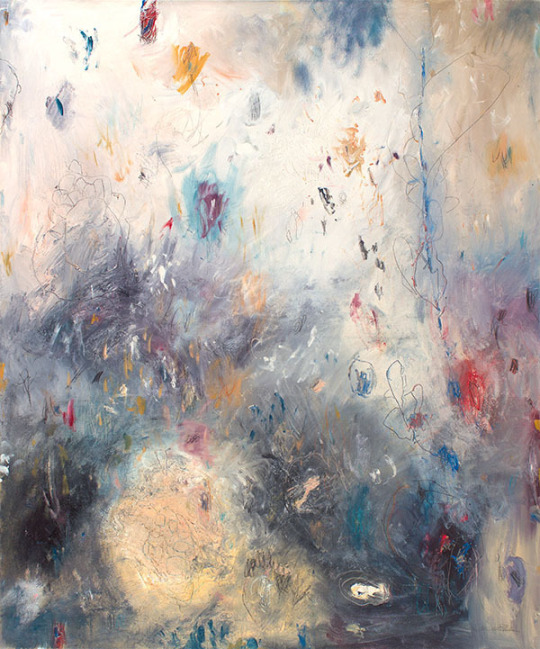
‘The Light that Comes from Waiting’ - Thomas McNickle (b. 1944)
962 notes
·
View notes
Photo

Evening Vigil, 2005-06 – Thomas McNickle
mixed media on canvas | source:
2K notes
·
View notes
Photo
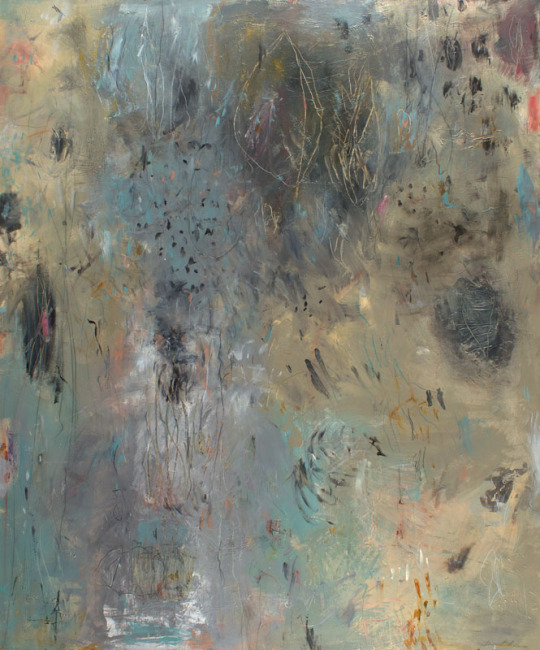
‘Wind Through the Trees’, 2005-06 – Thomas McNickle (b. 1944)
mixed media on canvas | source:
102 notes
·
View notes
